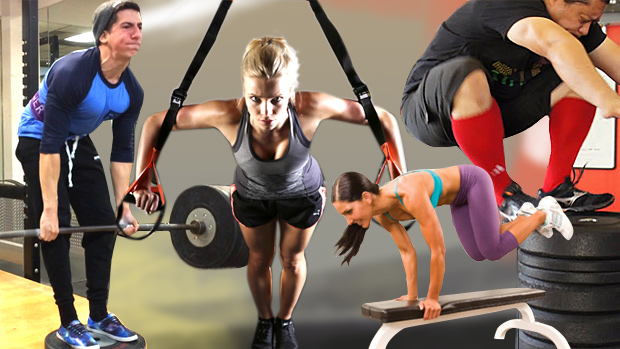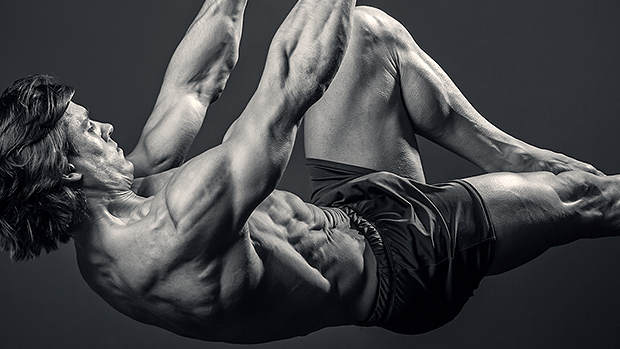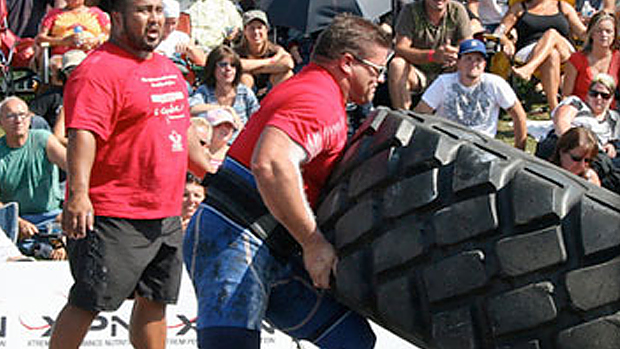Many coaches are quick to condemn certain forms of exercise as "bad." They seldom are, but some exercises are definitely misused and even abused. Here are seven examples and how to make them better.

You can do a variety of exercises with kettlebells and suspension straps (TRX and the like). I'm all for coaches taking courses to learn the nuances involved in using these tools.
But you can often tell when a trainer has recently come back from taking a kettlebell or suspension training course because almost every exercise he has his clients do involves the same piece of equipment he just took the course on.
Just because you're excited about what you've learned doesn't mean that every dang exercise is made better by the implement you've been certified to coach. Nor does it mean that every client has to be run through almost every technique you learned in the course.
And if you're not a coach, then remember to use the best equipment for the job. No matter how great a training tool is, not every tool is best for all exercises. Straps and kettlebells have their place but they're not the best options for every movement pattern you're wanting to do.
And any exercise is misused when it’s based more on the trainer’s excitement to use it instead of what’s best for the client based on their goals, abilities and preferences.

You can usually tell where the group training facilities are in your area because you'll often see people running around the gym's neighborhood or parking lot.
Running on occasion, as part of a comprehensive workout and conditioning component, is fine. But it's misused when "taking a lap" around the building or "running to the end of the parking lot and back" is continually used by trainers or group instructors as their default tactic to make people tired – while buying themselves time to figure out what they're going to do next in the workout.
If you're a coach who does it to clients, it's lazy. If you're an individual who does it to yourself, it means you need to plan your workouts a little better and make conditioning a more conscientious part of your routine, not just a random idea.
The funny thing is, some gyms are located in big industrial buildings, which is a big lap, while other facilities have a much smaller area they have people running in. This speaks to the arbitrary nature of "taking a lap."
Not to mention, if you're a person who's looking to join a group training facility, find one located in a smaller building and that isn't connected to a huge parking lot. Why? Because you'll spend less time running and have more time doing things that actually require coaching from the instructor. You know, the one you're paying with your hard-earned money.

The purpose of standing on top of an aerobic step (or some other slightly elevated surface) is to gain an increased range of motion than what you'd have if you did the same exercise standing on the floor.
That's why, when performing deficit reverse lunges, the goal is to lightly tap your back knee to the floor at the bottom of each rep. The same goes for barbell deadlifts and RDLs. The goal is to make sure the weight plates tap the floor on each rep.
But using a step to perform deficit reverse lunges, deadlifts, or Romanian deadlifts gets misused when people don't actually perform the exercise with greater range of motion than they would if they were on the floor. It makes no sense.
Don't believe me? Think about reverse lunges. If you're starting on the top of the step then stepping backward onto the floor, but you're not lowering your back knee below the level of the surface you're standing on, then you just defeated the purpose of the deficit.
Same concept with deadlifts and RDLs. If you're not lowering the plates below the level of whatever you're standing on, then the deficit does you no good. Standing on the floor would've been just fine.

Although this should be obvious, there are countless instances of people in the gym failing to move through an increased range of motion while standing on an elevated surface because they're simply copying something they saw someone else do without having a clue as to why they're doing it.

The internet is riddled with box jump fail videos. Instead of watching those videos and learning from the mistakes of others, lots of people take it as a challenge to try it themselves.
Basically, it's the gym culture's version of Tide Pod eating challenges. Gym fail videos aren't just for entertainment, they're also an educational tool in what not to do. The only thing smarter than learning from your own mistakes is learning from the mistakes of others.
High box jumps get misused when the emphasis is on the height of the box instead of the height of actual jump. Sounds weird, but here's why that is:
Let's say you're standing next to a high box platform that's the same height as your waist. Now pick up one leg off the ground and flex your hip as high as you possibly can. The distance between the bottom of your foot and the top of the box is the actual height you'd have to jump in order to get on top of that box. The rest comes from hip flexion.
Now, if your goal when using high box jumps is to emphasize work on quick hip flexion, fine. But most people are using high box jumps because they want to emphasize explosive jump height. This is where box jumps get misused.
Trying to increase vertical jump height? That will require a powerful and explosive hip extension action, instead of a hip flexion action, which means you actually want to limit the amount of hip flexion involved in landing on top of the box.
If you do this, you won't land on top of the box in that super-low crouched position we see during high box jumps. Instead, you want to find the highest box height that you're able to land on, but with your knees and hips only bent around 30 degrees. With this method you'll get all the good stuff from the exercise and you'll be far less likely to become the star of the next high-box fail video.
Of course, you won't be able to use as high of a box if you're limiting the amount of hip flexion involved in the movement, which may be a blow to your ego. But there's a big difference between what determines smart and effective training and what makes for cool social media material.

Plyometrics get misused when they're used by figure and bikini competitors, as if they have some kind of special leg shaping or fat burning power. Talk to enough figure or bikini competitors and it's very likely they'll have a specific "plyometric" day in their training program because it's a been common thing for them to do for many years.
Plyometric movements involve the stretch-shortening cycle, which consists of three phases:
- A pre-stretch or eccentric loading phase
- The amortization (transition) phase
- Muscle contraction or explosion phase
The goal of plyometrics is to make the transition phase as fast as possible by minimizing the time between the end of the pre-stretch and the start of the concentric muscle action. This is why plyometrics can be considered "reactive power training."
So, plyometrics are demanding on your body, and certainly great to incorporate some plyo work to improve athleticism. But to do a full workout of plyos is risky and certainly not going to have any special leg shaping or metabolic benefits over weight training exercises.
Many trainers will say something like, "You should first master your own bodyweight before using external loads." This is how bodyweight exercises get misused: when they're used exclusively, instead of along with exercises that involve adding weight.
I prefer it this way: Master your body with bodyweight training, and master your environment with external loads.
Adding something as simple as resistance bands if you're training at home or outdoors will give you more options and allow your workouts to be more comprehensive. They can also allow you to load the horizontal and diagonal vectors that gravity doesn't load through bodyweight training.
Plus, in order to properly use external loads, such as cable and resistance band exercises, you've got to have good body control and awareness. So it's still requiring you to master your body, just in a different way. And being able to use your body in many ways is the name of the game!

Unstable surface training can have its place in the rehabilitation programming process of certain injuries. But using unstable surface training (like kneeling or standing on a stability ball while lifting weights) for improving strength and sports performance is a different story.
A quick summary of the relevant research shows that:
- "The diminished force output suggests that the overload stresses required for strength training necessitate the inclusion of resistance training on stable surfaces."
- "Resistance exercise performed on unstable equipment may not be effective in developing the type of balance, proprioception, and core stability required for successful sports performance. Free weight exercises performed while standing on a stable surface have been proven most effective for enhancing sports related skills."
So if you want to gain strength and improve power, you must create sufficient overload on the body to stimulate those adaptations. But lifting weights while standing or kneeling on a ball is a misuse of the stability ball because the environment created isn't nearly as effective as being on a stable surface for stimulating gains in strength and power.
Unless you're a Cirque du Soleil performer whose act involves balancing on a big ball, the ground you're living on, practicing on, and playing on is stable.
Now, some may claim that they're not using stability ball exercises to increase strength, but instead to improve balance. The problem is, using a stability ball is a learned skill that's no different than learning the skill of riding a bike. You get good at riding a bike through practice, just as you get good at standing on a ball through practice. No one expects having the ability to balance on a bike will offer much transfer into improved (functional) performance in non-bike-riding activities. So it doesn't make sense to think using a stability ball will be any different. It doesn't come close to replicating the force production and neuromuscular coordination patterns of running, jumping, punching, throwing, etc.
Although this may seem logical and based on the principle of specificity, we still have trainers preaching that becoming a trained seal on a ball by standing it on it while performing different resistance exercises will somehow transfer into functional performance in any athletic endeavor.
Believe it or not, the stability ball is one of my favorite training tools because it's cheap, takes up very little space, and offers a wide variety of effective exercise applications that can be used for general fitness, physique, and performance training.
Just because there are people who abuse a certain tool doesn't mean we should throw it out of our training toolbox... if the tool can be used in a way that actually has value. Heck, if that were the case we wouldn't use any equipment at all judging by some of the questionable things I've seen done with barbells, dumbbells, and medicine balls.
The stability ball is like any other training tool: how well it works is determined by the user.
- Behm D et al. The Effectiveness Of Resistance Training Using Unstable Surfaces And Devices For Rehabilitation. Int J Sports Phys Ther. 2012 Apr;7(2):226-41. PubMed.
- Anderson KG et al. Maintenance of EMG activity and loss of force output with instability. J Strength Cond Res. 2004 Aug;18(3):637-40. PubMed.
- Willardson J. The Effectiveness of Resistance Exercises Performed on Unstable Equipment. Strength & Conditioning Journal. 2004 Oct;26(5).





